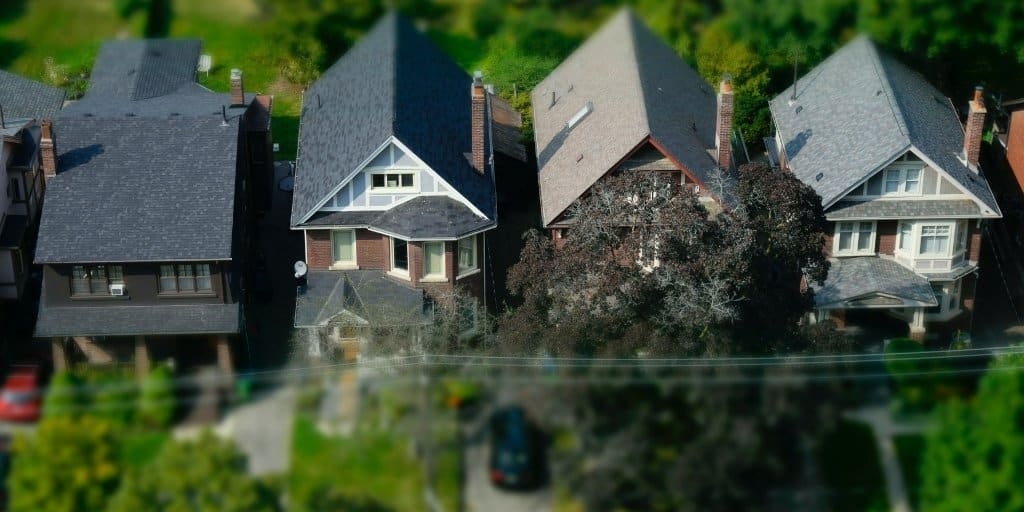
REtipster does not provide tax, investment, or financial advice. Always seek the help of a licensed financial professional before taking action.
There’s nothing passive about buying, renovating, and managing rental properties. It requires both labor and skill, and a lot of them.
Doorvest aims to change that as a done-for-you rental investing platform. They offer to do just about everything for you, making investing in turnkey rental properties as passive as possible.
As you explore passive income and other semi-passive ways to invest in real estate, here’s what you need to know about Doorvest.
What Is Doorvest?
Doorvest combines a turnkey property marketplace with full-service property management so investors can simply step in and start enjoying rental income.
They find a distressed property, renovate it, and rent it to a qualified tenant. As the end buyer, you can view available turnkey rental properties on the Doorvest marketplace and pick properties to purchase.
When you choose a property on Doorvest, they help connect you with a lender to provide financing. You buy the renovated property directly from Doorvest at the price they set.
Doorvest also provides ongoing property management, so you can sit back and watch the rents flow into your account.
Doorvest Review
Summary
Doorvest offers both a turnkey property marketplace and full-service property management.
In fact, their optional upgrade to premium management includes more unique features like rent guarantees, maintenance credits, reimbursement of turnover costs, and renovation guarantees for a full year. But removing those risks comes at a cost, so don't expect huge cash flow yields on Doorvest's turnkey properties.
Pros
- Almost completely passive
- Renovation guarantee
- Rent guarantee
- Premium management option reduces other rental risks
- No vacancy fees
- Easy tax documentation
- Option to resell property through platform
Cons
- Market pricing for properties
- Costs eat into returns
- No control over renovations
- Limits on renovation guarantee
How Does Doorvest Work?
The platform helps property investors through the following stages of ownership.
Choosing and Comparing Properties
When you create a free account on Doorvest, you can immediately view their property marketplace. You can view all available properties, along with full details and financials for each.
Listings show photos, information about the local real estate market, and slick interactive charts displaying projected returns over time. You can adjust for variables like how much you want to put down to see how the property performs under different scenarios.
The financials include a breakdown of monthly expenses and income, historical appreciation and future projections, and a year-by-year breakdown of annual returns over the next five to 30 years. Investors can view projections for different exit strategies as well, including selling after a certain period or refinancing for cash out.
Financing Properties
Doorvest partners with both conventional and portfolio lenders to provide multiple options for buyers.
They can connect you with a lender—but you still need to qualify for the loan on your own. That includes providing the lender with all required documentation when requested.
You then close on the property to become the legal owner, and Doorvest continues managing it for you.
Ongoing Management
For the first year, investors must use Doorvest’s in-house property management service. After that, you can discontinue service and hire another manager if you prefer.
Doorvest does include some perks in its property management service, however. It doesn’t charge a leasing or vacancy fee.
As an uncommon feature, Doorvest guarantees the rental income for at least three months (or indefinitely, if you pay for premium management services). It also guarantees the promised rent for the first year, in their rent delta coverage.
Debt Funds
As a more recent offering, Doorvest has started raising money to fund its acquisitions through short-term debt funds.
They offer a new fund each month, with a six-month term and monthly interest payments. These funds pay 8% to 12% interest and historically require a $5,000 minimum.
Pros of Doorvest
There’s a lot to like about Doorvest. Consider some advantages as you compare them to other (mostly) passive ways to invest in rentals.
As Passive as Possible for Direct Ownership
It's hard to imagine a more passive way to buy and own rental properties directly.
They do the initial renovation, provide a transparent marketplace for comparing properties, and manage the property with optional lease and vacancy guarantees. They even help you secure financing, although, of course, you still have to apply and go through underwriting yourself.
It’s not quite as passive as buying fractional ownership through a real estate crowdfunding platform—but it’s close.
Renovation Guarantee
Doorvest makes money by buying distressed properties and renovating them before listing them for sale on its marketplace. Doorvest guarantees the renovation work they’ve completed for your first three months of ownership to make investors feel more comfortable.
Interestingly, you can contrast this to how rental properties (typically) make money.
Rent Guarantee
Included with the basic property management plan, Doorvest also guarantees on-time rent payments for the first three months. If the tenant fails to pay, Doorvest pays you.
Doorvest’s premium property management plan includes an ongoing rent guarantee. It also guarantees the full advertised market rent on the property listing, even if they rent it for less.
The basic plan typically costs 10% of the collected rent (although you can reduce it to 8% by paying annually upfront), while the premium plan costs 23%.
Other Premium Management Perks
The premium property management plan also includes a few other fun features.
Property owners receive maintenance credits of up to $2,500 each year to cover repairs and maintenance costs not caused by turnover.
However, the premium plan also covers the costs of up to one turnover each year. That includes cleaning the property and landscaping touch-up, although it does not include the cost of eviction or tenant damage.
No Vacancy Fee
Doorvest aligns its interests with yours by not charging a property management fee for months when the property sits vacant. It’s incentivized to re-rent the property as quickly as possible to a qualified tenant.
Emphasis on qualified since they guarantee at least the first three months of rent payments.
Fortunately, we've written a guide on how to screen tenants quickly and easily—go read that first to find out which tenants are “qualified.”
Easy Tax Documentation
With Doorvest, you don’t have to track income or expenses. They provide full tax documentation and a bottom-line number to plug into your tax return.
You still get to deduct all expenses on a separate schedule from your personal tax return.
Option to Re-List Property on Marketplace
When and if you decide to sell the property, you can resell it by listing it on Doorvest’s marketplace. Doorvest charges a 2% listing fee but handles all the work associated with selling the property.
Cons of Doorvest
Like all investing platforms, Doorvest has its share of downsides. Make sure you understand the following drawbacks and risks before buying a property for hundreds of thousands through Doorvest.
Market Pricing for Properties
While Doorvest charges fees for its marketplace and property management service (more on those shortly), its core business is flipping houses.
Doorvest buys distressed properties at a discount, renovates them to add value, and then sells them as turnkey rental properties through its platform. It sells properties at market value, pocketing a tidy profit on the flip.
Costs Eat Into Returns
Doorvest charges a series of fees, both as a marketplace and also as a property manager.
When you go to buy a property on their platform, you pay a non-refundable reservation fee of $1,500. If your financing falls through, for example, you must still pay the $1,500 fee.
On the property management side, their basic plan costs 8% to 10% in most cases, which is standard in the industry. The premium plan costs significantly more at 23% but includes unusual benefits like a rent guarantee, maintenance credits, and turnover coverage.
Doorvest also charges a $450 fee for lease turnovers and a $50 fee for lease renewals.
All told, these fees can eat into your returns and, in some cases, leave you with negative cash flow.
Risk of Negative Cash Flow
As a former landlord and rental investor myself, I can tell you firsthand it’s hard to find properties that cash flow well—especially if you pay market pricing.
Perusing the properties on Doorvest, many do cash flow if you opt for the basic property management plan. But the premium property management plan puts cash flow projections in the red. Granted, the projections don’t take into account savings on maintenance or lost rents from defaults, which the premium plan protects you against. Doorvest’s “DV Boost” program subsidizes some buyers’ rents to keep cash flow positive. Investors must still exercise caution when projecting their cash flow numbers, however.
No Control Over Renovations
Whether you put a property under contract before or after Doorvest has completed repairs, you don’t have any say over those renovations. You can’t pick the finishes or dictate the scope of work in any way, like you could if you bought your own fixer-upper.
That’s the flip side of done-for-you: someone else sits in the driver’s seat.
Limits on Renovation Guarantee
Doorvest’s renovation guarantee only covers three months for buyers who choose the basic property management time. If you’re a long-distance investor who never sets eyes on the property yourself, you’re unlikely to notice any problems within three months of buying.
Landlords who choose the premium management plan get that guarantee extended to a year. Even then, it only covers repairs made by Doorvest and excludes tenant-caused damage, among other exclusions.
The guarantee covers up to $2,500 per claim, with a maximum total of $7,500.
How Doorvest Compares
The most established competitor to Doorvest is Roofstock, which operates the largest marketplace for turnkey rental properties in the country. At the time of this writing, Roofstock has 6,061 property listings, most of which are owned by sellers unaffiliated with Roofstock.
By contrast, Doorvest has 13 properties listed on its marketplace, all owned by Doorvest itself.
However, Roofstock does less handholding, operating as a more traditional marketplace that simply connects buyers and sellers. It manages properties for institutional investors, but for individual buyers on its marketplace, it simply recommends local property managers that you can hire yourself.
Mynd—owned by Roofstock—also offers fully managed acquisitions and property management but only does so for institutional investors. Individual investors can only use Mynd’s property management or listing services.
The option most similar to Doorvest is REI Nation, which helps turnkey investors buy and manage rentals. At this time, they have 35 turnkey properties listed on their marketplace. REI Nation offers full-service property management, although it doesn’t offer a rent guarantee like Doorvest. They don’t publish their property management pricing on their website, however.
Doorvest: The Verdict
Doorvest offers a truly hands-off way to buy and manage single-family rental properties.
And they charge accordingly. Their premium property management plan takes most of the risk out of rental investing by protecting against lost cash flow from rent defaults and some maintenance costs. But it can also eat into your cash flow.
If you love the idea of owning a rental property directly without any labor obligations, Doorvest takes care of all the work for you. However, try to invest for appreciation rather than cash flow, as your property may not pay a cash-on-cash return—at least for a while.
That said, for more information on how (and why) you should buy turnkey real estate, our guide “Should You Buy a Turnkey Rental Property?” may give you some necessary insight on maximizing Doorvest's capabilities.












